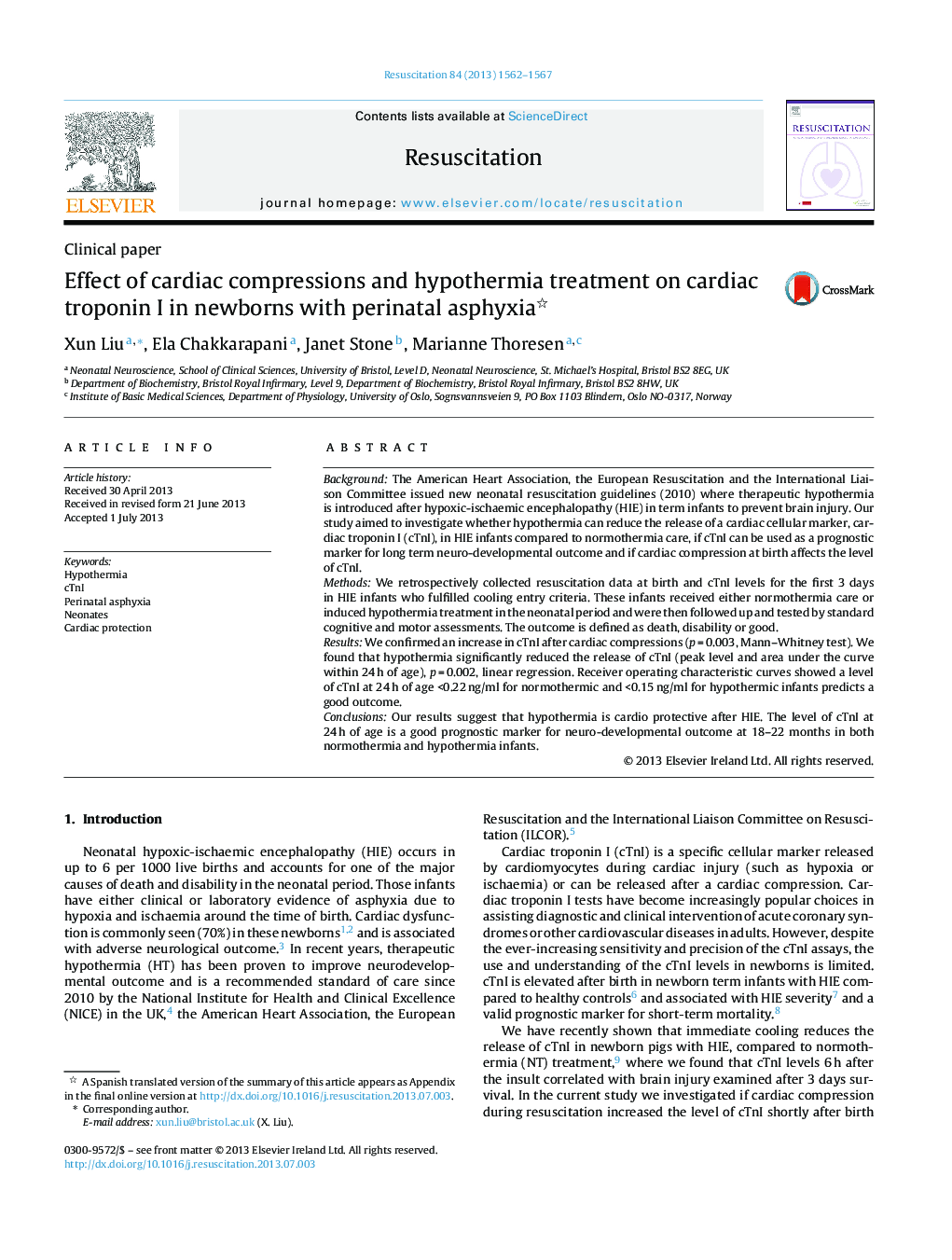| Article ID | Journal | Published Year | Pages | File Type |
|---|---|---|---|---|
| 5998978 | Resuscitation | 2013 | 6 Pages |
BackgroundThe American Heart Association, the European Resuscitation and the International Liaison Committee issued new neonatal resuscitation guidelines (2010) where therapeutic hypothermia is introduced after hypoxic-ischaemic encephalopathy (HIE) in term infants to prevent brain injury. Our study aimed to investigate whether hypothermia can reduce the release of a cardiac cellular marker, cardiac troponin I (cTnI), in HIE infants compared to normothermia care, if cTnI can be used as a prognostic marker for long term neuro-developmental outcome and if cardiac compression at birth affects the level of cTnI.MethodsWe retrospectively collected resuscitation data at birth and cTnI levels for the first 3 days in HIE infants who fulfilled cooling entry criteria. These infants received either normothermia care or induced hypothermia treatment in the neonatal period and were then followed up and tested by standard cognitive and motor assessments. The outcome is defined as death, disability or good.ResultsWe confirmed an increase in cTnI after cardiac compressions (p = 0.003, Mann-Whitney test). We found that hypothermia significantly reduced the release of cTnI (peak level and area under the curve within 24 h of age), p = 0.002, linear regression. Receiver operating characteristic curves showed a level of cTnI at 24 h of age <0.22 ng/ml for normothermic and <0.15 ng/ml for hypothermic infants predicts a good outcome.ConclusionsOur results suggest that hypothermia is cardio protective after HIE. The level of cTnI at 24 h of age is a good prognostic marker for neuro-developmental outcome at 18-22 months in both normothermia and hypothermia infants.
